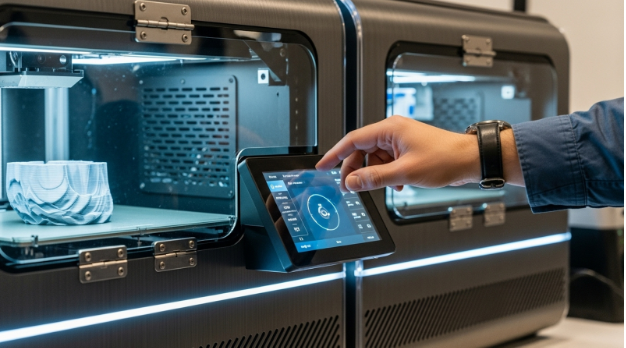Something remarkable is happening on factory floors across the globe right now. The old-school manufacturing playbook, the one that served us well for generations, simply can’t keep pace anymore. We’re talking about speed, adaptability, and economics that traditional methods just can’t deliver.
And here’s the thing: analysts expect the worldwide market to reach $76 billion by 2030, propelled by breakthroughs in aerospace, healthcare innovations, and automotive evolution. If you’re running a business today, understanding these shifts is the difference between leading your market and scrambling to catch up.
How This Revolution Is Reshaping Entire Sectors
What we’re witnessing goes beyond incremental improvement. Breakthrough production technologies are collapsing timelines and slashing expenses in ways that seemed like science fiction not long ago. Industries spanning healthcare, construction, and beyond are embracing capabilities that literally didn’t exist five years back.
Aerospace and Healthcare Push Boundaries
Consider this: aircraft components now achieve 40-60% weight reductions through advanced manufacturing techniques. NASA and SpaceX manufacture rocket components on demand these days, completely bypassing the months-long supplier queues that once seemed inevitable.
The healthcare side? Equally transformative. Custom prosthetics designed around individual patient anatomy deliver better fit and lower costs than mass-produced alternatives ever could. Surgical teams using planning models reduce operation duration by 30%, directly cutting patient risk while trimming hospital budgets.
Automotive and Building Innovation Accelerates
Vehicle development has been completely reimagined through rapid prototyping. Processes that consumed months now wrap up in days. BMW and Ford aren’t just prototyping with these methods, they’re installing end-use parts in actual production vehicles. Meanwhile, you’ve got large-scale printed structures going up in Dubai and the Netherlands, proving that construction waste can plummet 70% while enabling architectural designs that conventional building simply cannot accomplish.
Speed, personalization, and waste elimination keep appearing. These aren’t abstract benefits, they’re concrete competitive weapons for manufacturers who recognize their value.
What Separates Market Leaders from Everyone Else
Efficiency breakthroughs don’t just happen by chance. Innovation in manufacturing is being redefined by 3d printing companies, which are transforming how products are designed, produced, and delivered. As technology continues to evolve, 3D printing stands at the forefront of industrial progress, offering scalable solutions that accelerate innovation and shape a more agile, sustainable future for global manufacturing.
Getting Products to Market Lightning-Fast
Same-day prototyping fundamentally changes product development. Traditional manufacturing demands expensive tooling that eats up weeks or months before you see anything. Additive approaches eliminate that bottleneck. You can iterate on designs without retooling expenses, which means engineers can test multiple versions in rapid succession. Product launches that historically required 18 months? They’re wrapping in six now.
Real Cost Savings That Hit Your Bottom Line
Conventional production burns through budgets with upfront investments in expensive molds and tooling. Additive methods wipe those costs off your spreadsheet. Material waste drops 90% compared to subtractive techniques like machining. On-demand manufacturing kills both inventory storage costs and overproduction waste. Suddenly, small production runs make financial sense for the first time.
Design Liberation and Environmental Responsibility
Complex lattice structures? Organic geometries that traditional methods physically cannot create? They’re routine now. Topology optimization generates parts with optimal strength-to-weight performance. Multi-material capabilities mean single-piece assemblies where you previously needed dozens of separate components. Carbon footprint reductions and recycled material use address environmental imperatives while simultaneously cutting your costs.
You can access these advantages through various service models calibrated to different operational needs.
Production Technologies That Are Changing the Game
Different 3d printing technologies shine in specific applications. Matching the right approach to your requirements determines whether you succeed or struggle.
FDM and SLA Options Explained
Fused Deposition Modeling represents your most accessible entry point. Industrial-grade thermoplastics handle demanding applications without breaking the bank. Stereolithography delivers precision and resolution for intricate components. Modern resin formulations include biocompatible materials perfect for medical and dental applications where detail is everything.
Metal Capabilities and Powder-Based Systems
Metal 3D printing generates titanium, aluminum, and stainless steel components that meet aerospace-grade specifications. Selective Laser Sintering removes the need for support structures, reducing post-processing time and expense. North America accounts for 41% of global 3D printer revenues, reflecting serious industrial adoption of these advanced technologies.
These technological choices become practical through both cloud-based platforms and local service partnerships.
How Cloud Manufacturing Levels the Playing Field
By leveraging online 3d printing services, the barrier of million-dollar equipment investments vanishes. Small businesses now access industrial-grade technology that Fortune 500 companies once monopolized.
Instant Pricing and Worldwide Production Networks
Cloud platforms deliver instant quotes when you upload your file. Global manufacturing networks route orders to facilities nearest your end users, cutting shipping duration and costs.
Some operations connect thousands of manufacturers through automated workflows. API integration creates automated ordering systems that trigger production based on your inventory thresholds.
Quality Standards You Can Trust
ISO 9001 and AS9100 certifications guarantee consistent quality across distributed networks. Material certifications and dimensional accuracy guarantees shield you from substandard outcomes. Industry-specific compliance for FDA or aerospace standards unlocks access to regulated markets.
Expert consultation and design for manufacturing feedback optimize your designs before production starts. This global reach complements the local service benefits that matter for certain project types.
Why Local Partners Still Matter
When customers search for custom 3d printing near me, they’re finding nearby facilities with distinct advantages. Similarly, 3D printing services near me deliver benefits that remote providers simply cannot replicate.
The Proximity Advantage
Faster turnaround and same-day delivery matter tremendously for time-sensitive projects. Face-to-face consultations enable collaborative design sessions that refine concepts quickly. You’re strengthening local manufacturing ecosystems and regional economies. Reduced shipping expenses and carbon footprint align with sustainability commitments while padding your budget.
How to Assess Local Providers
Technology capabilities and machine inventory define what’s achievable. Material selection matters significantly, specialty options like ESD plastics or medical-grade resins aren’t universally available. Portfolio reviews reveal industry experience and quality standards. Pricing transparency and minimum order requirements affect whether your project is viable. Customer reviews and case studies expose reliability better than any marketing pitch.
Smart manufacturers blend local and online services strategically. Rush orders go local. High-volume production leverages cost-optimized online networks.
Where Manufacturing Goes From Here
This production revolution creates genuine opportunities for businesses ready to move quickly. Speed benefits, cost reductions, and design flexibility give early adopters substantial competitive positioning. Whether through cloud-based platforms or local partnerships, accessing advanced production capabilities has never been more straightforward.
The technology keeps improving as costs continue declining. Companies integrating these methods now are positioning themselves to dominate their sectors. The real question isn’t whether you should adopt these approaches; it’s how quickly you’ll begin and how thoroughly you’ll weave them into your operations.
Your Questions About 3D Printing Services Answered
How do online services compare cost-wise to local providers?
Online services typically undercut local pricing for standard production thanks to economies of scale. Local providers command premiums but deliver faster turnaround. For urgent orders or design collaboration, local makes sense despite higher per-unit expenses.
What industries benefit most from this manufacturing approach?
Aerospace and defense see enormous returns through weight savings and complex geometries. Healthcare capitalizes on patient-specific customization. Automotive slashes development timelines dramatically. Architecture explores designs that traditional construction methods physically cannot execute.
Can small businesses compete with large manufacturers now?
Absolutely, yes. Cloud-based services provide identical equipment access as major corporations. Zero capital investment is required upfront. Small batches become economically sensible. The competitive landscape has leveled substantially for both startups and established players.



